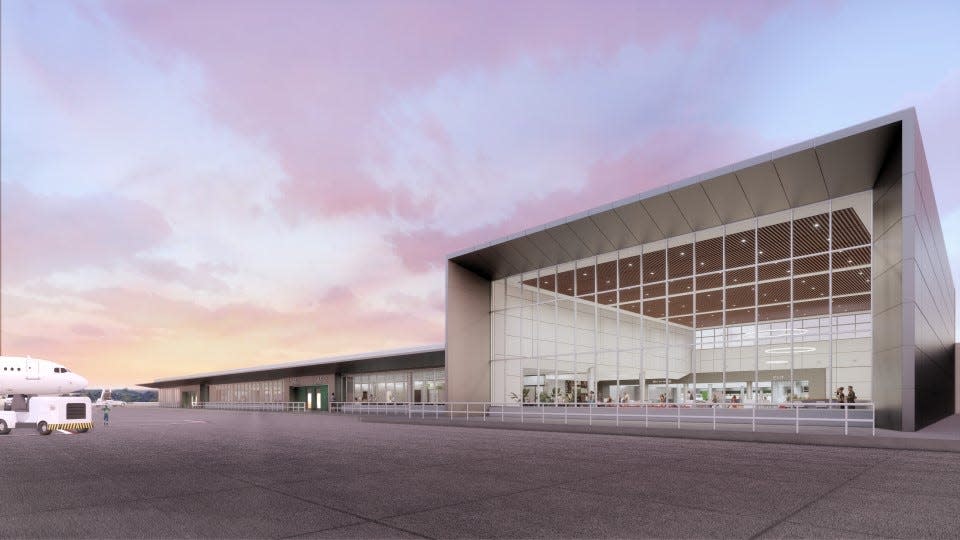Why the FAA rejected the New College of Florida and Sarasota Bradenton Airport land swap
The Federal Aviation Administration indicated it rejected a land deal between New College of Florida and the Sarasota Bradenton International Airport because it saw little value to the airport in giving up the property compared with holding onto it. The agency also criticized the appraisal estimating the land's value in the airport-New College deal.
"It appears a greater benefit results from retaining the property," according to the FAA letter signed by Orlando Airports District Office Acting Manager Rebecca Henry. "Policy states that Surplus Property should not be released unless there is no greater benefit from retaining the property."
Airport and New College representatives declined comment on the federal agency's conclusions, indicating a formal response contesting the FAA's determination will be filed.
The FAA notified Sarasota Bradenton International Airport officials last week that it had declined the airport's request to release the property from federal obligations to facilitate a deal with New College to keep the land and buildings their for its long-term campus plan.
FAA rules require fair market value for the sale or lease of airport land, but the college's low-cost lease, set to expire in 2056, was made many years before the rule was implemented and was grandfathered in as a result.
Catch up: FAA rejects a major land deal between New College of Florida and Sarasota Airport
More: Officials detail plans for major land swap between New College and SRQ airport
New College housing deemed incompatible with airport operations

New College signed a 99-year land lease in October 1957, but the lease was meant for retail development that never occurred, according to the FAA.
There are 15 New College facilities on the 34.8 acres leased from the airport for $108,072 per year. They provide residential student or staff dormitories, meeting rooms, student lounges and activity centers and utility housing, recreational game fields a swimming pool, and a retention area.
"Based on information reviewed by the Agency, it appears the land leased to New College was converted from aeronautical use to nonaeronautical educational/residential use without FAA consent," Henry wrote.
"There are residential elements (student housing) in the existing New College leasehold," she wrote. "Neither FAA policy nor the 1947 Surplus Property deed itself allow the airport to be used for nonaeronautical purposes, particularly residential purposes, without FAA consent."
She noted that FAA guidance requires all airport properties to be zoned Airport/Light Industrial, which is consistent with federal grant assurances.
FAA raises concern over appraisal of the property
The FAA claims that the appraisal for the airport land proposed for sale to New College is faulty, and was conducted on only about 8.85 acres of airport property rather than the full 30.9 acres proposed for sale to the college.
The FAA also raised issue with properties that were used for comparison.
Those properties include a self-storage facility located 40 miles away, an undisclosed commercial space located about 26 miles away, a pending sale of a property zoned as institutional/commercial/industrial eight miles away, the pending sale of property zoned as "open use rural" located 10 miles away, and a pending sale for planned residential multifamily development six miles away."These comparable sales are not thought to be similar to the highest and best use of this property, which the sponsor states are medical/ institutional/charitable office and meeting space," Henry said. "Note, the highest and best use should be airport/light industrial, or possibly commercial use."
Henry noted that the property appraisal appears to have missing information, and is not an "unrestricted appraisal" as required by federal guidelines.
"In fact, it appears the appraiser only reviewed the latest and very abbreviated lease assignment document and not the lease in its totality," Henry said.
FAA claims SRQ Airport's master plan is outdated
The FAA also said that the SRQ airport's master plan, or at least its Airport Layout Plan, are outdated and should be revised to determine if there is any aeronautical need for the property in the future.
"The most recent FAA approved Airport Layout Plan (ALP) is dated 2021 and is based on a Master Plan completed the same year," Henry said. "However, the Master Plan data is thought to be at least six years old and is expected to be outdated, especially in light of the sponsor’s assertions they are the fastest growing airport in the country."
SRQ set a record in 2023 with more than 4.3 million passengers, including 406,113 passengers in December, a 7.5% increase compared to the 377,775 passengers in December 2022. The 12-month activity through December 2023 totaled 4,322,408 passengers, a 12% increase in passengers for the calendar year, compared to 2022's 3,847,606 passengers.
The airport is undergoing a major expansion due to its rapid multi-year growth. Several projects are underway, including $10 million in contracts to expand parking and a more than $45 million to upgrade the baggage handling systems and construction of a new terminal, with the combined cost for all the work estimated at about $200 million.
This article originally appeared on Sarasota Herald-Tribune: New College and SRQ airport land swap rejection explained

